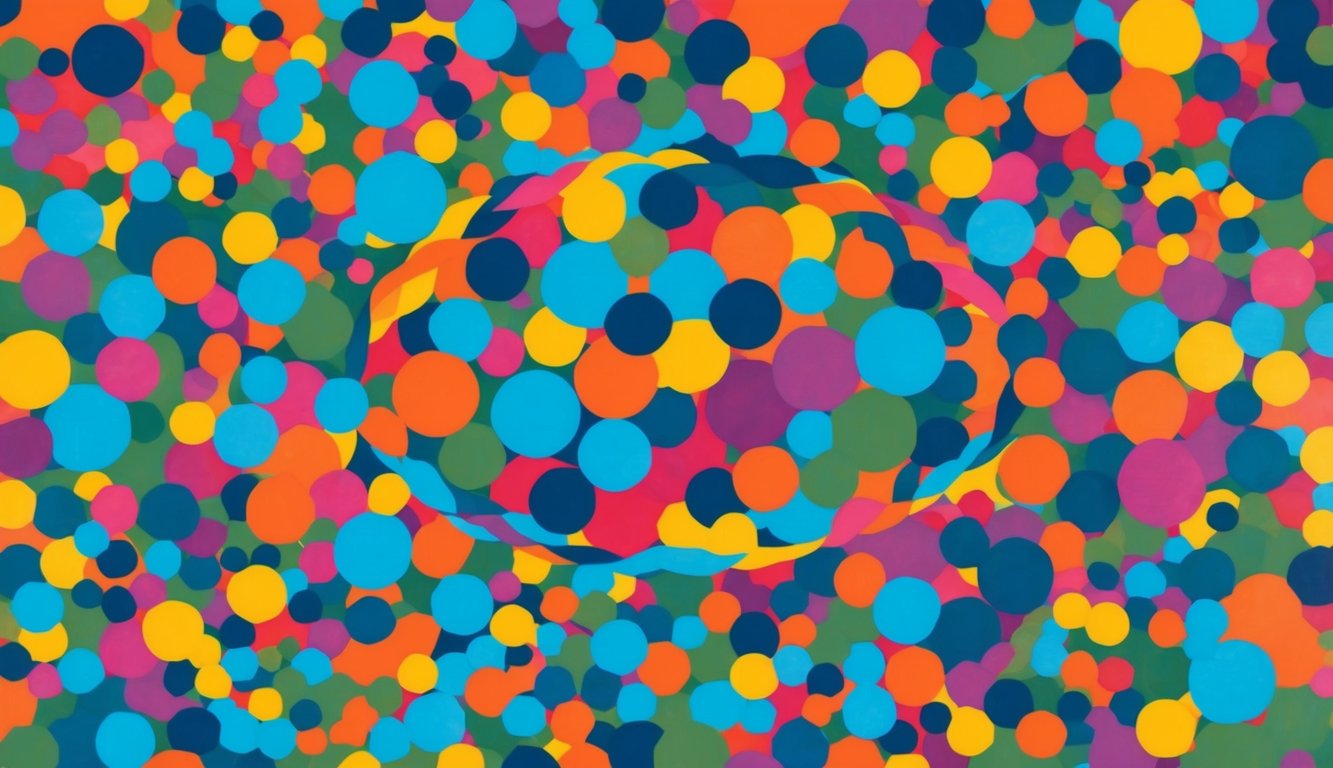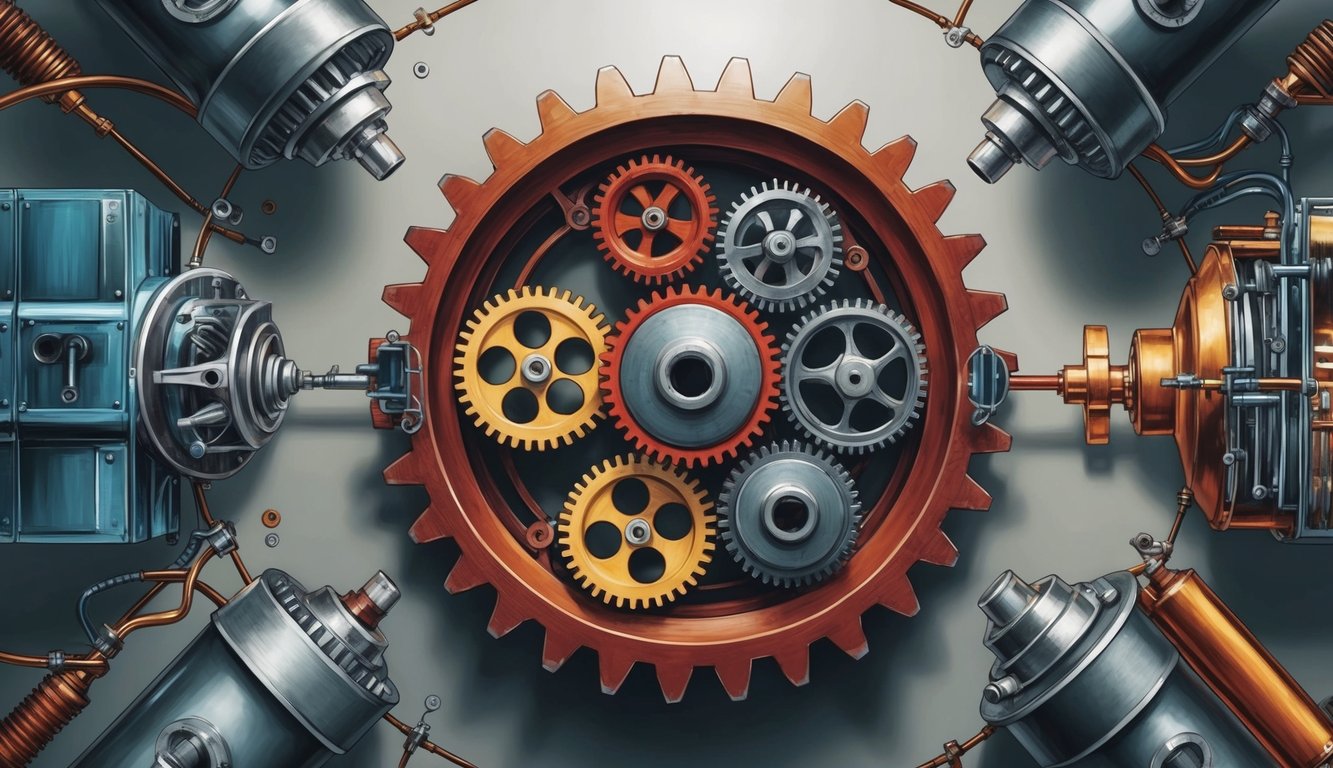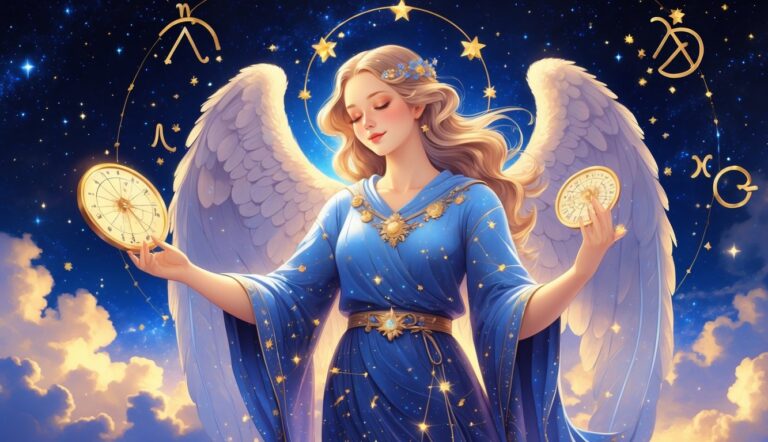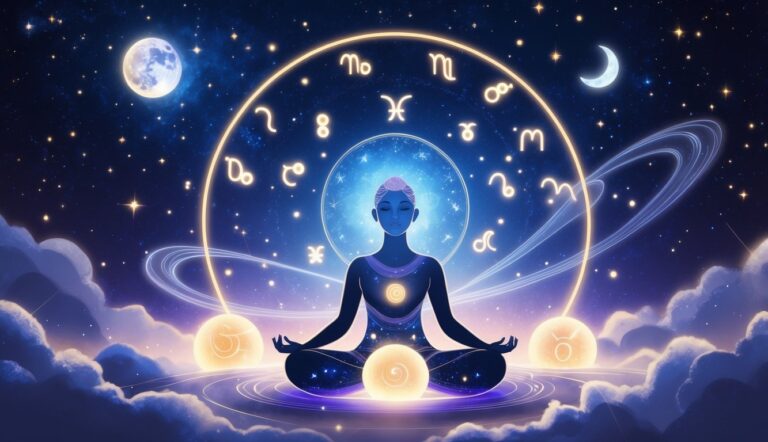Align Your Life with Your True North
The Power Quadrant System decodes your natural talents and pinpoints the career, timing and relationships that let you earn more, love deeper, and wake up eager for the day.
- Uncover your #1 high-income strength
- Draw in partners who raise your energy
- Work when your body’s clock is in “flow”
Have you ever wondered about the deeper meaning behind circles? These simple yet powerful shapes appear everywhere in our world and carry rich symbolism across cultures and belief systems.
Circles symbolize wholeness, unity, infinity, and the cyclical nature of life and the universe. Their continuous form without beginning or end represents eternity and the divine.
You’ll find circular symbols in art, architecture, and spiritual practices around the globe.
In many traditions, circles represent harmony and balance.
The Celtic caim circle was used in wedding ceremonies as a protective symbol for newlyweds.
The yin-yang symbol depicts the unity of opposites within a circle.
Even in everyday life, gathering in a circle fosters a sense of equality and connection.
As you explore circular symbols, you’ll discover their profound impact on human culture and consciousness.
Historical Perspectives
Circles have held deep symbolic meaning throughout human history.
Ancient cultures, religious traditions, and mystical practices have all ascribed profound significance to this simple yet powerful shape.
Ancient Civilizations
You’ll find circles playing a central role in many ancient cultures.
Decode Your Personal Success Blueprint
Power Quadrant System shows you the exact career, relationships, and daily rhythm that match your natural DNA—so you earn more, work happier, and connect deeper.
- Pinpoint your #1 money-making talent
- Erase conflict & attract ideal partners
- Multiply productivity with perfect timing
In Egypt, the circular ouroboros symbol represented eternal cycles of renewal.
The Mayans used circles in their intricate calendar system to track celestial movements and mark important dates.
Ancient Greek philosophers like Plato viewed the circle as the most perfect shape, associating it with the divine and the cosmos.
In China, the circular yin-yang symbol embodied the balance of opposing forces in the universe.
Stonehenge in England and other prehistoric stone circles across Europe served as gathering places for rituals and astronomical observations.
These massive circular monuments connected earthly and celestial realms for ancient peoples.
Religious Contexts
You can see the circle’s importance in many world religions.
In Buddhism, the mandala represents the universe and serves as an aid for meditation and spiritual growth.
Hindu yantras often incorporate circles to symbolize cosmic unity.
Tap Into Your Built-In Success GPS
The Power Quadrant System deciphers your genetic blueprint so you can lock onto the career, income and relationships that feel effortless—and wildly rewarding.
- Zero in on your natural high-earning genius
- Sync with partners who boost your vibe
- Wake up driven, finish days fulfilled
Christianity uses circular halos to denote holiness in religious art.
The Jewish Kabbalistic Tree of Life diagram features interconnected circular sefirot representing divine attributes.
Islamic geometric art frequently employs circles, reflecting the perfection and unity of Allah.
In Native American spirituality, the medicine wheel embodies the cyclical nature of life and the four cardinal directions.
Alchemy and Mysticism
You’ll encounter circles prominently in alchemical and mystical traditions.
Alchemists used the ouroboros and other circular symbols to represent the unity of matter and the cyclical nature of transformative processes.
In astrology, the zodiac wheel divides the heavens into twelve circular houses.
Magical practices often involve casting protective circles to create sacred space.
The Hermetic principle “as above, so below” is sometimes depicted as two interlocking circles.
This represents the correspondence between microcosm and macrocosm central to many esoteric philosophies.
Tarot decks feature circular imagery, like the Wheel of Fortune card symbolizing life’s ups and downs.
The circular nature of these symbols reflects the interconnectedness of all things in mystical worldviews.
Symbolism in Culture
Circles hold deep cultural significance across societies worldwide.
Their perfect shape and endless form have inspired symbolic meanings in various aspects of human expression.
Literature and Mythology
In literature and mythology, circles often represent unity and wholeness.
You’ll find them in ancient creation stories, where the world emerges from a circular void.
Greek myths feature the Ouroboros, a snake eating its own tail, symbolizing cycles of life and death.
Celtic legends use circles to depict eternal love.
In Arthurian tales, the Round Table embodies equality and fellowship among knights.
Modern fantasy literature, like Tolkien’s works, uses circular objects to signify power and fate.
Circles appear in poetry as metaphors for completeness and perfection.
You might recognize William Blake’s famous line, “To see a World in a Grain of Sand / And a Heaven in a Wild Flower / Hold Infinity in the palm of your hand / And Eternity in an hour.”
Art and Architecture
Circles play a crucial role in art and architecture across cultures.
You’ll notice them in religious buildings, from the domes of mosques to the rose windows of Gothic cathedrals.
These circular elements often symbolize divine perfection and unity.
In painting, circular compositions guide your eye and create harmony.
Renaissance artists like Leonardo da Vinci used circles to structure their works.
Modern artists like Wassily Kandinsky explored circles as pure abstract forms, representing cosmic unity.
Mandalas in Hindu and Buddhist art use intricate circular designs to represent the universe.
You’ll find similar patterns in Native American sand paintings and Celtic knots, all expressing wholeness and interconnectedness.
Modern Pop Culture
Circles continue to hold symbolic power in today’s pop culture.
You’ll see them in corporate logos, representing unity, completeness, or global reach.
Think of the Olympic rings symbolizing international cooperation.
In film and TV, circular imagery often signals important plot points or character transformations.
The time-turner in Harry Potter, for instance, is a circular device controlling time itself.
Music embraces circular symbolism too.
Album covers frequently feature circular designs, echoing the shape of vinyl records.
Song lyrics use circle metaphors to express ideas of continuity and return.
Video games use circular health bars and power-up symbols.
In social media, profile pictures are typically circular, perhaps subconsciously emphasizing the user’s wholeness as an individual.
Philosophical Meanings
Circles hold deep significance in philosophy, representing fundamental concepts about existence and reality.
Their perfect form and endless nature inspire profound contemplation.
Unity and Wholeness
You might notice how circles symbolize unity and wholeness in philosophical thought.
The seamless shape represents the interconnectedness of all things.
Ancient Greek philosophers saw the circle as the most perfect geometric form, embodying completeness.
In Eastern philosophies, you’ll find the circle used to represent the idea of oneness – the unity of all existence.
The mandala, a circular spiritual symbol, reflects this concept of wholeness.
Circles also represent the self in Jungian psychology.
The circular shape mirrors the integrated psyche, with all aspects of personality unified.
The Cycle of Life
You can see how circles reflect the cyclical nature of existence in many philosophical traditions.
The endless loop of a circle represents the continuous cycle of birth, death, and rebirth.
In Buddhist philosophy, you encounter the wheel of dharma, symbolizing the cycle of existence and the path to enlightenment.
Ancient Egyptians used the ouroboros – a serpent eating its own tail – to represent eternal cycles.
Circles remind you that endings lead to new beginnings.
They embody the concept of eternal return in Nietzsche’s philosophy, where all existence recurs infinitely.
Perfection and Symmetry
You’ll find circles often represent ideals of perfection and symmetry in philosophical thought.
Their flawless form has captivated thinkers for millennia.
Plato considered the circle the most perfect shape, reflecting the perfection of the divine realm of Forms.
You can see this idea echoed in Renaissance thinking, where circular forms were seen as expressions of cosmic harmony.
In mathematics and geometry, circles embody perfect symmetry.
This geometric perfection has led philosophers to use circles as metaphors for ideal concepts and absolute truths.
The concept of squaring the circle – attempting to construct a square with the same area as a given circle using only a compass and straightedge – became a metaphor for seeking impossible perfection.
Mathematical and Scientific Significance
Circles hold profound importance in mathematics and science, serving as fundamental shapes that unlock numerous principles and phenomena.
Their perfect symmetry and unique properties make them indispensable across various scientific disciplines.
Geometry and Proportion
In geometry, circles are defined by a set of points equidistant from a central point.
This simple yet elegant shape forms the basis for many mathematical concepts.
You’ll find circles at the heart of trigonometry, where sine and cosine functions describe circular motion and periodic phenomena.
The ratio of a circle’s circumference to its diameter gives us pi (π), an irrational number with endless decimal places.
This constant appears in countless mathematical formulas and real-world applications.
Circles also play a crucial role in the golden ratio, a proportion found throughout nature and art.
This ratio, approximately 1.618, can be derived from the proportions of a circle divided into specific arcs.
Astronomy and Space
When you look up at the night sky, you’re observing countless circular orbits.
Planets, moons, and artificial satellites all follow elliptical paths that closely resemble circles.
This circular motion is governed by gravitational forces and forms the basis of celestial mechanics.
In astrophysics, you’ll encounter circular concepts in the study of black holes.
The event horizon, the boundary beyond which nothing can escape a black hole’s gravity, is often represented as a perfect circle.
Telescopes use circular lenses and mirrors to focus light from distant celestial objects.
The shape of these optical elements is crucial for clear, undistorted images of the cosmos.
Quantum Physics and Metaphysics
At the quantum level, circles take on new significance.
Electron orbitals, which describe the probability of finding an electron around an atom, are often visualized as spherical shells – essentially three-dimensional circles.
In particle physics, you’ll encounter circular particle accelerators like the Large Hadron Collider.
These massive rings use electromagnetic fields to propel subatomic particles to near-light speeds for collision experiments.
Some theories in quantum mechanics and cosmology propose circular or cyclical models of time and the universe.
These ideas challenge linear perceptions of reality and suggest interconnected, looping structures at the most fundamental levels of existence.
Psychology of Shapes
Shapes influence our perception and emotions in profound ways.
They tap into deep-seated psychological associations that can shape how we interpret and respond to visual information.
Cognitive Perception
Your brain processes shapes quickly, often before you’re consciously aware of it.
Circles tend to be perceived as friendly and approachable.
Their lack of sharp edges feels safe and non-threatening to your visual system.
You’re naturally drawn to symmetry and balance in shapes.
This preference likely stems from evolutionary advantages in recognizing healthy faces and bodies.
When you see circular shapes, your mind may automatically associate them with familiar round objects like the sun, moon, or a mother’s embrace.
This quick cognitive shortcut helps you make sense of your environment rapidly.
Symbolic Associations
You attach meaning to shapes based on cultural conditioning and personal experiences.
Circles often symbolize unity, wholeness, and infinity across many cultures.
In logo design, you might notice circles used to convey ideas of community, global reach, or continuous service.
Think of the Olympic rings or many social media app icons.
Similarly, triangles can symbolize stability and direction, while squares often represent balance and reliability.
The pentagram meaning in design is often associated with mysticism, spirituality, or even protection, depending on its context.
By understanding these shapes and their connotations, designers can craft logos that effectively communicate a brand’s values and message.
Religious and spiritual traditions frequently use circles in their symbolism.
You may recognize mandalas in Buddhism or the concept of the “circle of life” in various belief systems.
Circular shapes in art can evoke feelings of harmony and completeness.
When you see a perfectly round shape, it may trigger a sense of satisfaction or closure.
Therapeutic Use of Circles
Art therapists sometimes use circular shapes to help you express emotions or work through psychological issues.
Drawing or coloring mandalas can be a meditative and calming activity for you.
In group therapy settings, you might sit in a circle to promote equality and open communication.
The shape removes hierarchy and encourages a sense of community among participants.
Some mindfulness practices involve focusing on circular objects or movements.
You might use a circular breathing technique or trace a labyrinth pattern to reduce stress and increase present-moment awareness.
Circular imagery in guided visualizations can help you imagine wholeness or completion in your healing journey.
Picture a glowing orb of energy or a protective bubble surrounding you.
Practical Applications
Circles find their way into many aspects of our daily lives and built environments.
Their versatile shape lends itself to both functional and aesthetic purposes across various fields.
Logos and Branding
Circular logos are popular choices for many companies.
They create a sense of completeness and unity.
Think of the Target bullseye or the Starbucks mermaid encircled in green.
These shapes are easy to recognize and remember.
Circles in branding can convey different messages:
- Stability and reliability (e.g., car manufacturers)
- Continuous service (e.g., 24/7 businesses)
- Global reach (e.g., international companies)
When designing a logo, consider how a circle might enhance your brand’s message.
It’s a simple yet powerful shape that can make a lasting impression on customers.
Feng Shui and Interior Design
In Feng Shui practice, circles are believed to promote positive energy flow.
You might incorporate circular elements in your home to enhance harmony and balance.
Some ways to use circles in interior design:
- Round mirrors to expand space
- Circular rugs to define areas
- Globe lighting fixtures for soft illumination
Curved furniture pieces can soften a room’s angles and create a more welcoming atmosphere.
Think about adding a round coffee table or ottoman to your living space.
Urban Planning and Public Spaces
Circles play a significant role in urban design.
You’ll notice them in:
- Roundabouts for traffic flow
- Circular plazas as gathering spots
- Amphitheaters for performances
These designs often aim to create focal points or improve circulation.
Circular public spaces can foster a sense of community and inclusivity.
In parks, circular paths encourage exploration and provide a sense of journey and return.
Meanwhile, fountain designs frequently use circular shapes to create visually appealing water features that serve as meeting points.






